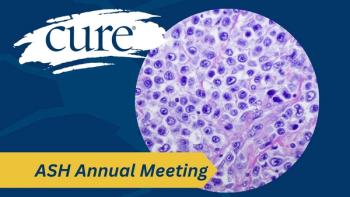
Myeloma: The First Remission Is the Deepest
Not everyone with myeloma needs to be treated right away, but when they do, there are some important upfront considerations for patients and providers.
Patients with myeloma should talk to their clinicians about getting the most out of the first treatment they receive for the disease, as it can affect their long-term outcomes, says Patricia Mangan, a hematology nurse practitioner at the University of Pennsylvania Abramson Cancer Center.
“One thing to stress is that typically, your first remission is the longest,” Mangan said during a presentation at the NCCN 2020 Virtual Congress on Hematologic Malignancies Nursing Forum. “Once you choose to treat someone with myeloma, you want to do it as aggressively as they can tolerate to get the biggest bang for your buck.”
Mangan explained that not all myeloma needs to be treated right away. However, if patients experience any of the following, it might be time for them to start a drug regimen:
- Calcium elevations in the blood
- Poor kidney function
- Anemia (low levels of healthy red blood cells)
- Bone disease
- More than 60% of plasma cells in bone marrow
The first line of treatment for patients with myeloma is typically a three-drug regimen including a proteasome inhibitor, immunomodulating agent, and steroids or dexamethasone. If a patient is eligible, they may then undergo an autologous stem cell transplant.
\“Once someone is diagnosed and they need to start treatment, there’s a quick decision of: Is this person potentially eligible for stem cell transplant or not? Do they have comorbid issues? Are they not fit or too old to undergo transplant?” Mangan said.
These questions need to be answered at the start of treatment, and a decision of transplant or no transplant should be made as soon as possible.
Patients who are able to get transplants will do so, and then likely be given maintenance therapy to keep the disease at bay. Conversely, those who are not transplant candidates can be given aggressive therapy upfront, and then, “start to peel off some of that initial treatment to get them on a maintenance of that to maintain remission,” Mangan said.
Remission after the first treatment tends to be the longest and most durable. However, most patients with myeloma will eventually relapse.
Luckily, there are now more options than ever before for the second- and third-line treatment of the disease.
“We can keep people doing well for a long period of time … our myeloma patients are survivors,” Mangan said. “They’re living much longer with each new year of treatments that come out.”
A version of this article was originally published on OncNursingNews.com as, “





